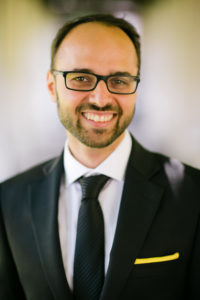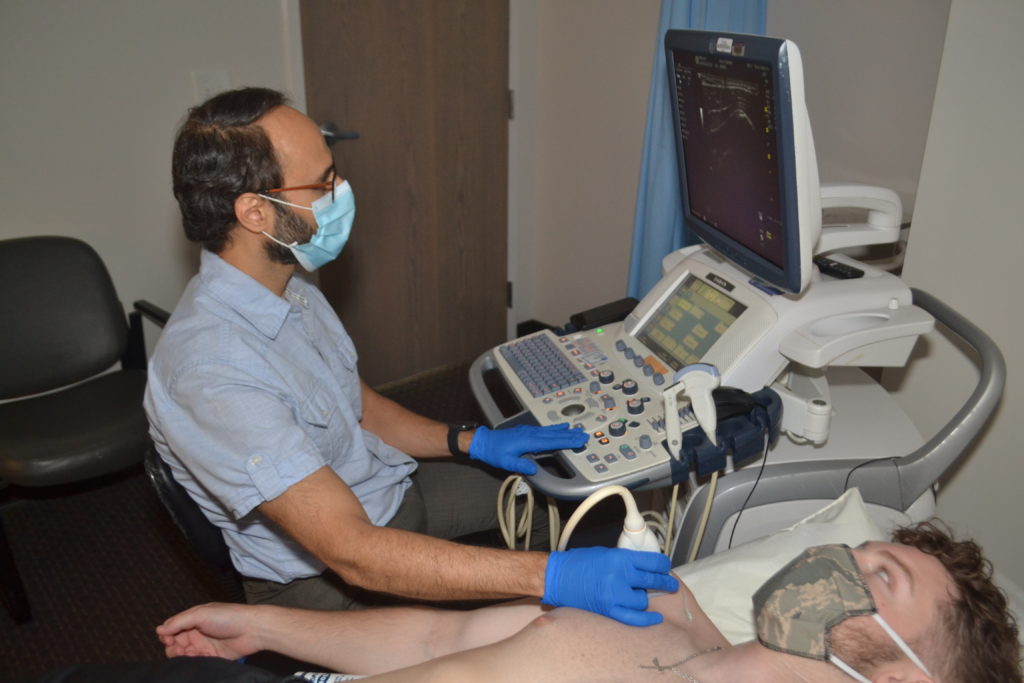Why we read pain to unlock the potential of regenerative medicine
LEXINGTON Your caregiver’s instinct might suggest that suppressing inflammation is an obligation. What if, in fact, you helped your patients by not limiting inflammation? The potential of regenerative medicine can be maximized by reconsidering pain and inflammation suppression, according to Danesh Mazloomdoost, MD, at Wellward Medical. Regenerative medicine is targeted medicine, and for Mazloomdoost, “Without pain as a road map, the target cannot be narrowed sufficiently to take full advantage of regenerative medicine’s potential.” He advocates letting pain speak and lead as a way to enduring healing, through both regenerative medicine and physical therapy
“Inflammation is the chemical process by which our body recognizes injury and initiates repair,” Mazloomdoost explains. As such, inflammation—and the pain it causes—should be understood not as the enemy of healing, but as a byproduct of the repair process. Unfortunately, Mazloomdoost feels,

“The medical establishment’s goal is to mitigate the adverse effect of inflammation, which is pain—but it is, at the same time, ignoring the process by which the body initiates healing.” Clinicians miss important markers, he concludes, and healing is being put off, sometimes permanently. The Wellward team uses a broad range of targeted orthobiologics to initiate joint repair once the pain points have been specified. Their BLTNO (bone/joint, ligament, tendons/muscles, nerves, other soft tissue) approach guides practitioners as they search for the root cause of pain to optimize the body’s ability to heal through interventional, physical, and functional medicine.
Regenerative Medicine: Natural Products, Targeted Healing, Powerful Results
Regenerative medicine is the process of healing the underlying causes of diseases through the use of native and bioengineered cells, assistive devices, and engineering platforms. It goes beyond disease management to focus on therapies that support the body in repairing, regenerating, and restoring itself to a healthy, fully functioning state. At Wellward, regenerative medicine starts with prolotherapy, a medication or chemical that induces an inflammatory response in order to instruct the body where strength or tissue remodeling is needed. This sets the table for the use of target orthobiologics.
One class of orthobiologics used at Wellward is the blood derived products. They include plasma, which is good for wound healing and non-healing ulcers, leukocyte rich plasma-rich protein (LR-PRP), known to be good for ligaments and tendons, leukocyte poor plasma-rich protein (LP-PRP), which ameliorates cartilage and joint erosion, and platelet lysate, which is used for nerves or for a pain reducing impact without as much repair. Additionally, plasma protein isolates can be used for a variety of purposes, including as a glue for tears in tissue.
The other class of orthobiologics is stemcell derived products, which are understood to activate and recruit repair cells of the body to a site of injury. They include bone marrow aspirate concentrate (BMAC), which is effective when an accelerated process is needed or there is severe tissue damage and adipose derived stem cells that can act as a scaffold for tissue repair.
Some clinics dabble in these treatments, but at Wellward, they are central to the healing process. The science of orthobiologics is emerging, and though targeted use is ideal, Mazloomdoost knows that “we will always need a combination of orthobiologics to treat a given pain point.” Determining the right combination of orthobiologics to activate healing is a fundamental element of Wellward’s work.
The “How” of Regenerative Medicine at Wellward
These powerful orthobiologics can only be used if you pay attention to the inflammation. For Mazloomdoost, “Pain suppressed is pain unread. Damage, inflammation, and pain are three interrelated processes: damage causes inflammation, inflammation causes pain.” Inflammation is the key: it is cells signaling; it is how your cells communicate. Pain is a byproduct of the signaling, not its primary purpose.
“Inflammation has anabolic (building up) and catabolic (breaking down) functions; it’s how the body coordinates repair efforts,” he says, “how it mobilizes resources.” He proposes we expand our understanding of inflammation, and as the negative connotations recede, we refine the use of inflammatory processes and use it as a tissue engineering tool. The main goal of inflammation is to shape or mold the body. Mazloomdoost says a way to understand this is working out: “Every time you exercise, you are doing controlled inflammatory processes to strengthen the body.”

Acknowledging this can also get patients off what he calls “the pain treadmill.” Suppressing pain indiscriminately with opioids leaves the patient more vulnerable to further damage by reinjuring the body over and over. If we constantly suppress pain with steroids and anti-inflammatories, we are defeating the purpose of anabolic inflammatory processes. Then, an acute injury can evolve into chronic pain. He concludes, “The reason you have chronic pain is because there is some bottleneck to your body repairing itself. If you suppress the pain, the healing is suppressed also; the injury and the pain will then remain, chronically.”
Consider the knee of a middle-aged former athlete who suffered a meniscal tear in his twenties. His knee hurts because there is damage; there is reason for the pain. He can take an anti-inflammatory and go about his business, but when he does, he is compounding the problem and delaying the healing process. For such a case that suggests cartilage erosion, Mazloomdoost talks about his BLTNO approach. He breaks down the joint into its component structures- its potential pain points- and considers each separately. The pain guides him to the bone structure, the ligament structure, the tendons and muscles, the nerves, or other soft tissue. “Cartilage erosion is a downstream effect of problems in one or more of the stabilizing structures of the knee,” he says. “The chronic inflammation of the former athlete’s joint is really the consequence of particular components breaking down.” The targeted orthobiologics are then applied as seen fit to the BLTNO structures affecting the cartilage. Physical therapy is a necessity also because it consists of controlled inflammation. Mazloomdoost explains that “PT is about doing enough harm to mold the body—to direct it towards repair—but not pushing it past that limit where you are causing harm.”
Not Suppressing the Pain Today; Better Joints Tomorrow
Not getting off the pain treadmill has its consequences. Mazloomdoost cites a Johns Hopkins study of over 1300 former medical students for 36 years following their knee and hip injuries. It found those injured as young adults more than doubled their risk of osteoarthritis in those joints later in life. Suppressing the pain allows such people to go back to normal activities, but it does not stop the damage—or the likely reliance on anti-inflammatories. He concludes, “If you suppress the pain indefinitely, you will ignore the symptoms, not seek treatment, and prolong or even accelerate the damage.”
Mazloomdoost acknowledges the challenge that re-understanding pain presents. It requires a radically different understanding of body mechanics, joint repair, and pain, which can be overwhelming for any practitioner. “This constitutes such a big paradigm shift for the medical community; the consequent block is palpable and inhibiting,” he laments.
The lesson for those young adults who suppress their pain—and contribute to their eventual osteoarthritis—is clear: today, with the breadth of orthobiologics and their potential for targeted usage, they can avoid disruptive joint pain later in life. Patients and practitioners who are open-minded about the message of inflammation can mold the body back into shape and not end up in that state of degraded joints.



